Introduction
The Conservative and Unionist Party (the “Tories”) is the oldest political party in the UK. Traditionally 1834 is seen as the year that marks the beginning of the modern party we know of today. That year, Sir Robert Peel issued an address to the electors of Tamworth which became known as the “Tamworth manifesto”. The manifesto attempted to combine the idea of moderate reform with a strong belief in traditional institutions; accepting the Reform Act 1832 but remaining opposed to unnecessary changes that might lead to “a perpetual vortex of agitation”. Peel was elected unopposed and became Prime Minister of a minority government.
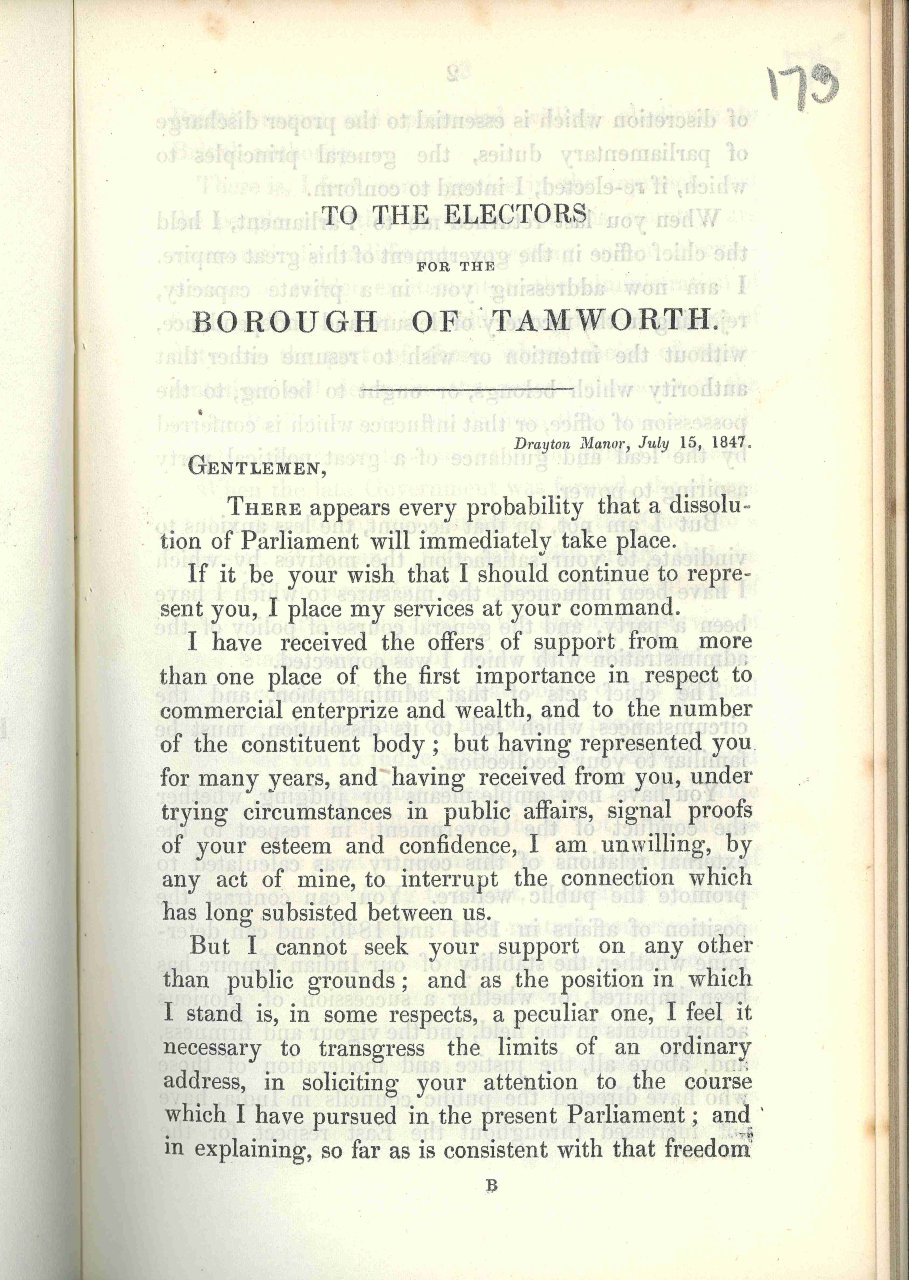 “The Tory Reform Act; What must we do with it? : register! register! !”, National Union of Conservative and Unionist Associations, 1868.
“The Tory Reform Act; What must we do with it? : register! register! !”, National Union of Conservative and Unionist Associations, 1868.
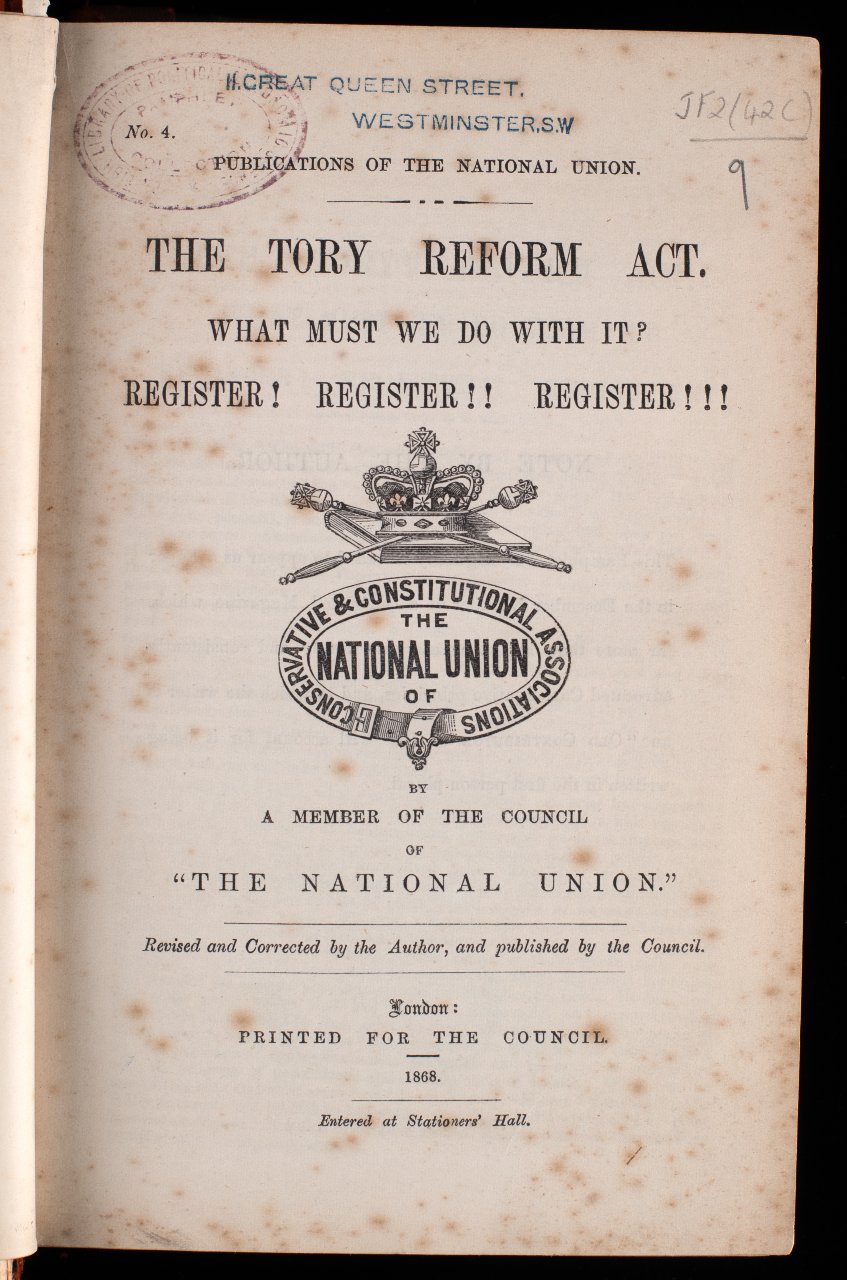
Unionist Government 1895 – 1905
Like perhaps all political parties, members are subject to differences of opinion, mergers, defections and coalitions.
The Liberal Unionist Party, that was founded in 1886, broke away from the Liberal Party and established an alliance with the Conservative Party over their shared opposition to Irish Home Rule. They formed a Unionist government from 1895 – 1905, and the following poster from the archives is widely repoted to have been decisive in their election victory of 1895. It headlines the programme announced by Joseph Chamberlain in his article, "The labour question", which was published in The Nineteenth Century in November 1892. The two parties remained separate until they merged in 1912.
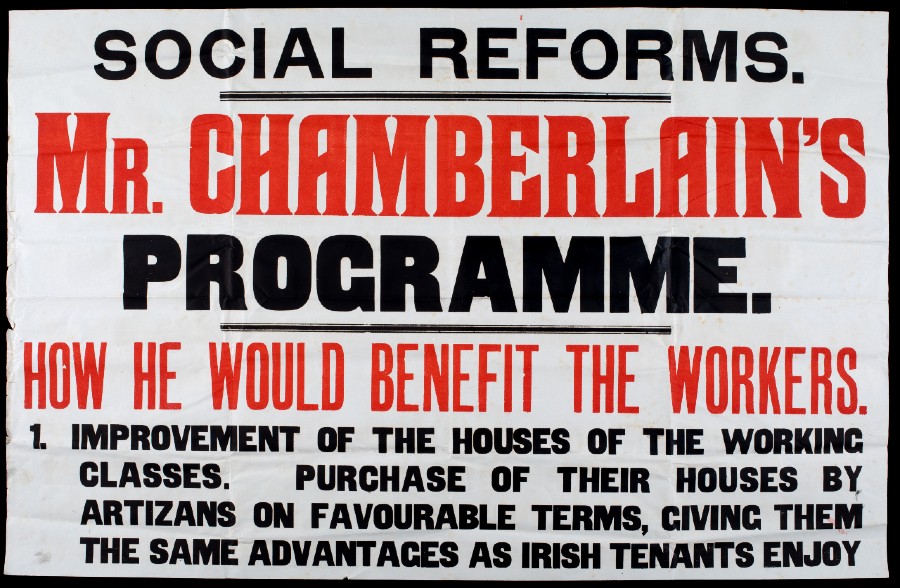
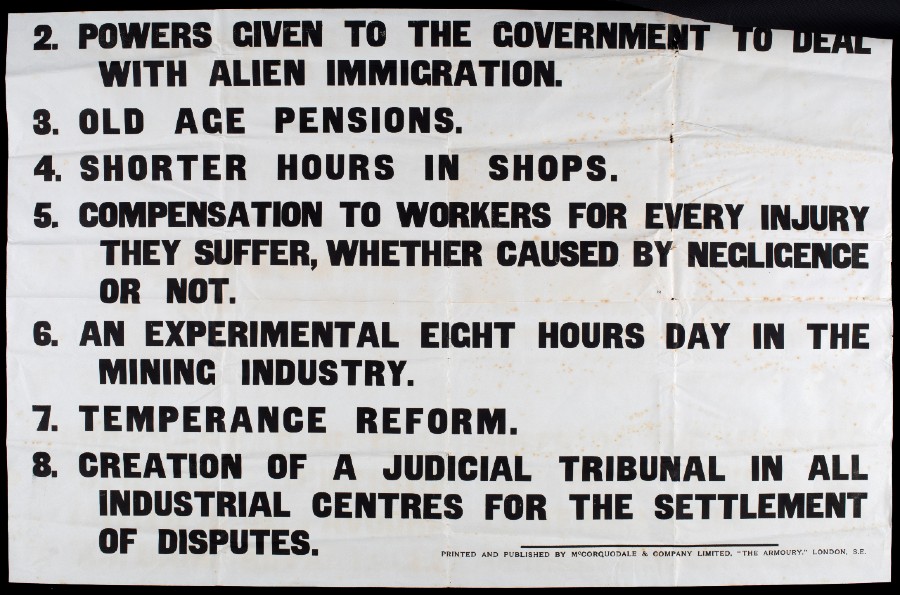
The Conservative Party and the General election 2019
Over 180 years later, the Conservative Party were leading a minority government in the General Election 2017. Facing parliamentary deadlock after the UK’s vote to leave the European Union in the 2016 referendum, the Conservative Party won the General Election 2019 with a comfortable majority of 80 seats. This majority meant that the government were able to pass the so-called “Brexit bill” (European Union Withdrawal Agreement Act 2020), and the UK left the EU on the 31 January 2020.
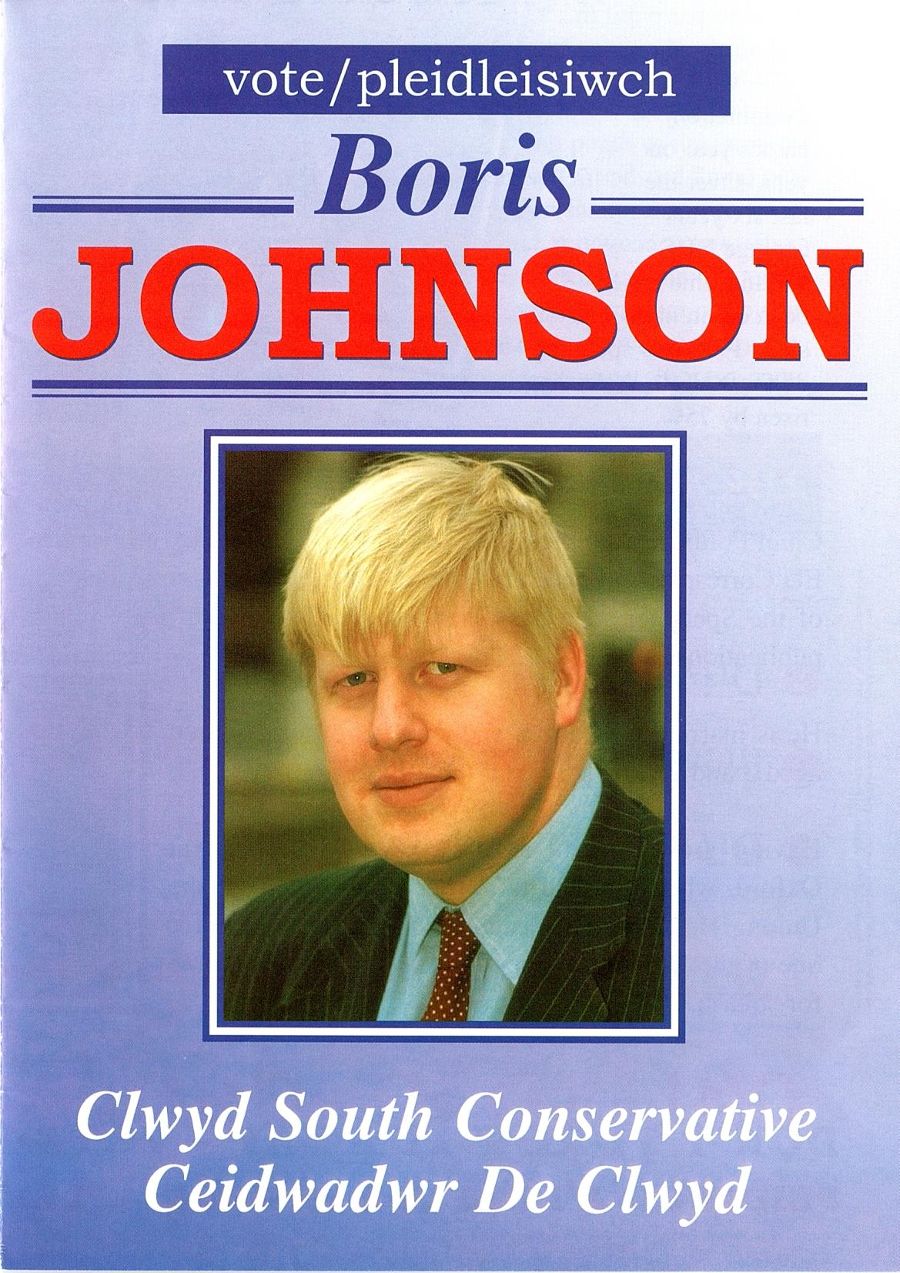 Leaflet from the 1997 General Election, where Boris Johnson came second to Martyn Jones in Clwyd South.
Leaflet from the 1997 General Election, where Boris Johnson came second to Martyn Jones in Clwyd South.
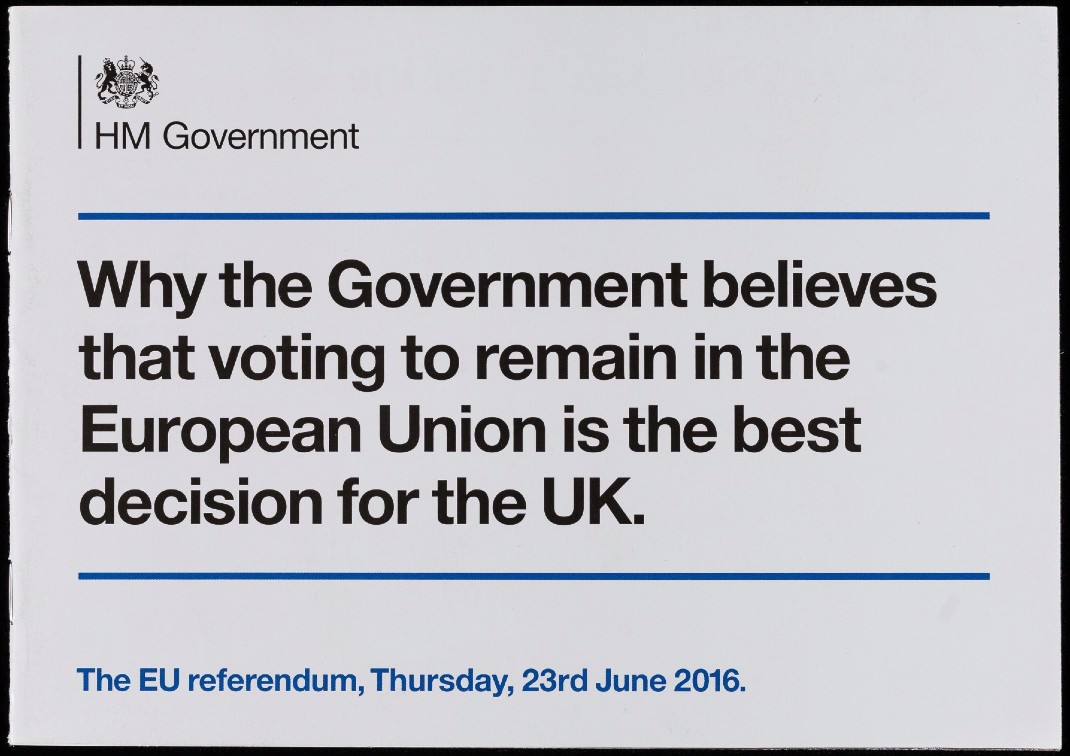 Leaflet produced by HM Government in the run up to the 2016 referendum on UK’s membership of the European Union. Read this and other leaflets from the 2016 referendum campaigns on our Digital Library here
Leaflet produced by HM Government in the run up to the 2016 referendum on UK’s membership of the European Union. Read this and other leaflets from the 2016 referendum campaigns on our Digital Library here
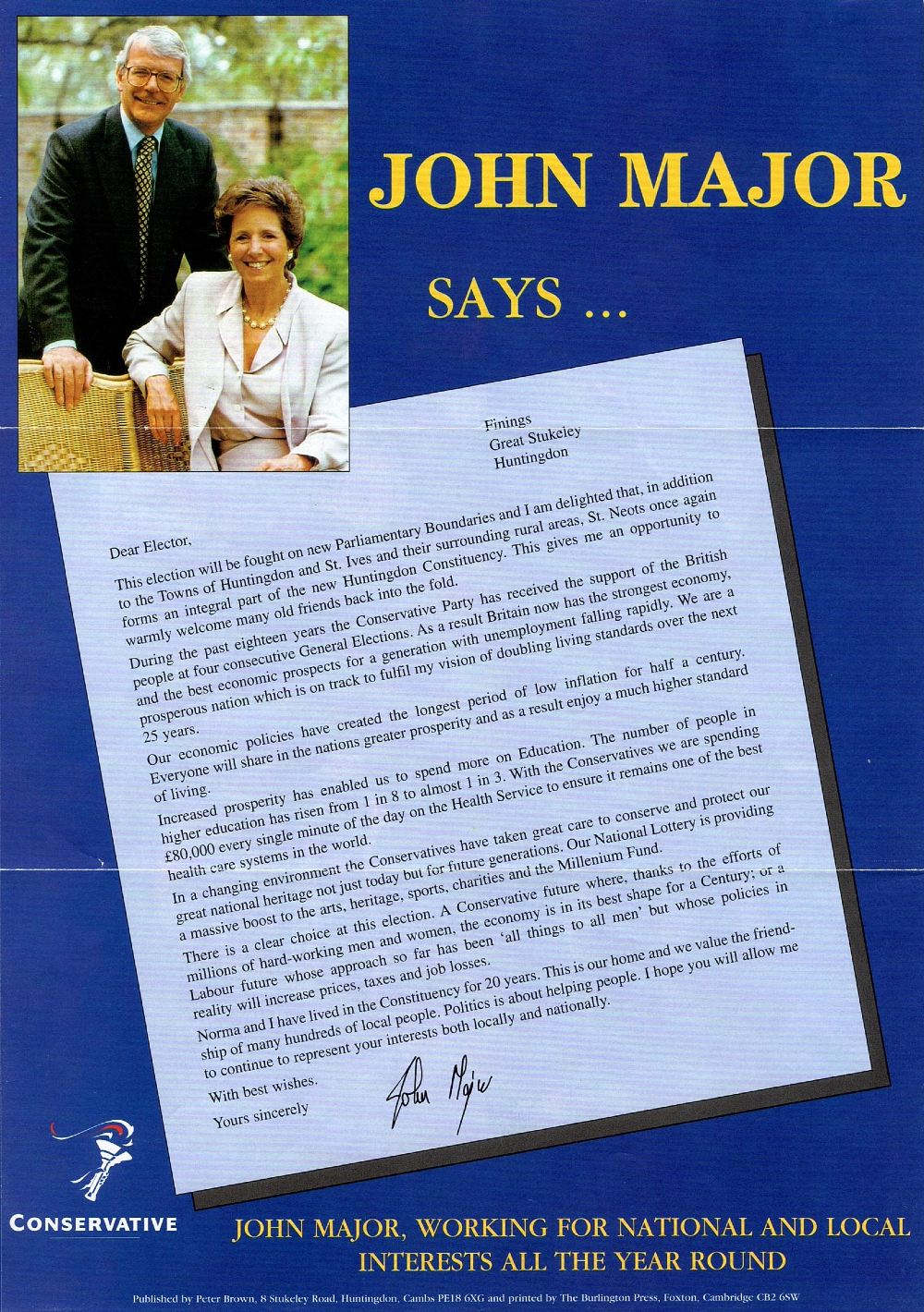
Example of a Conservative Party General Election leaflet, 1997.
If you’re interested in finding out more about the changing face of democracy in the UK, LSE Press have published a free, open access book: The UK’s Changing Democracy: the 2018 Democratic Audit.
What memories do the 2019 General Election evoke?
What memories do you have of the Conservative Party?
Share your thoughts with us!
Go to the exhibition home page